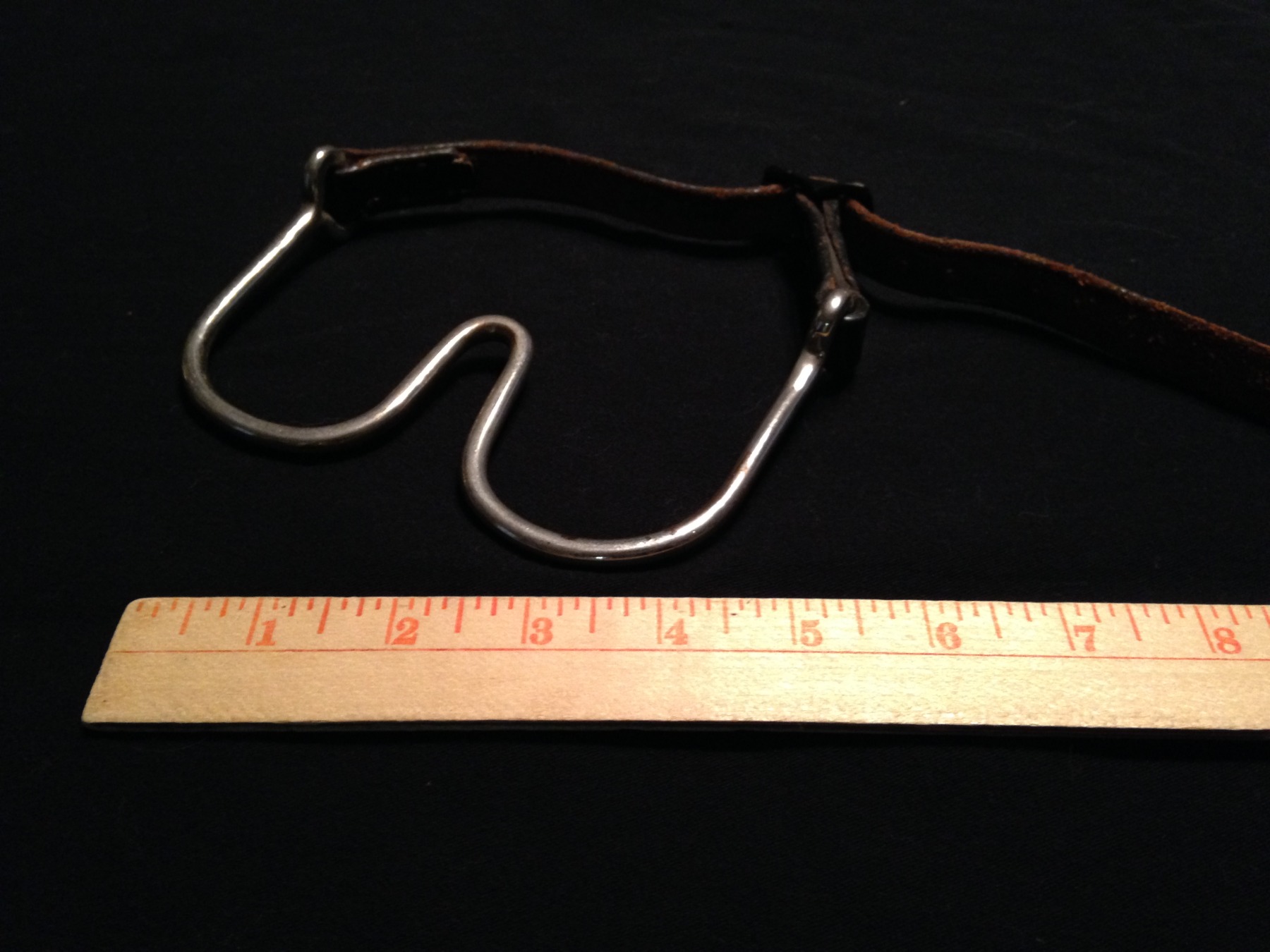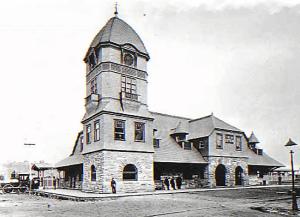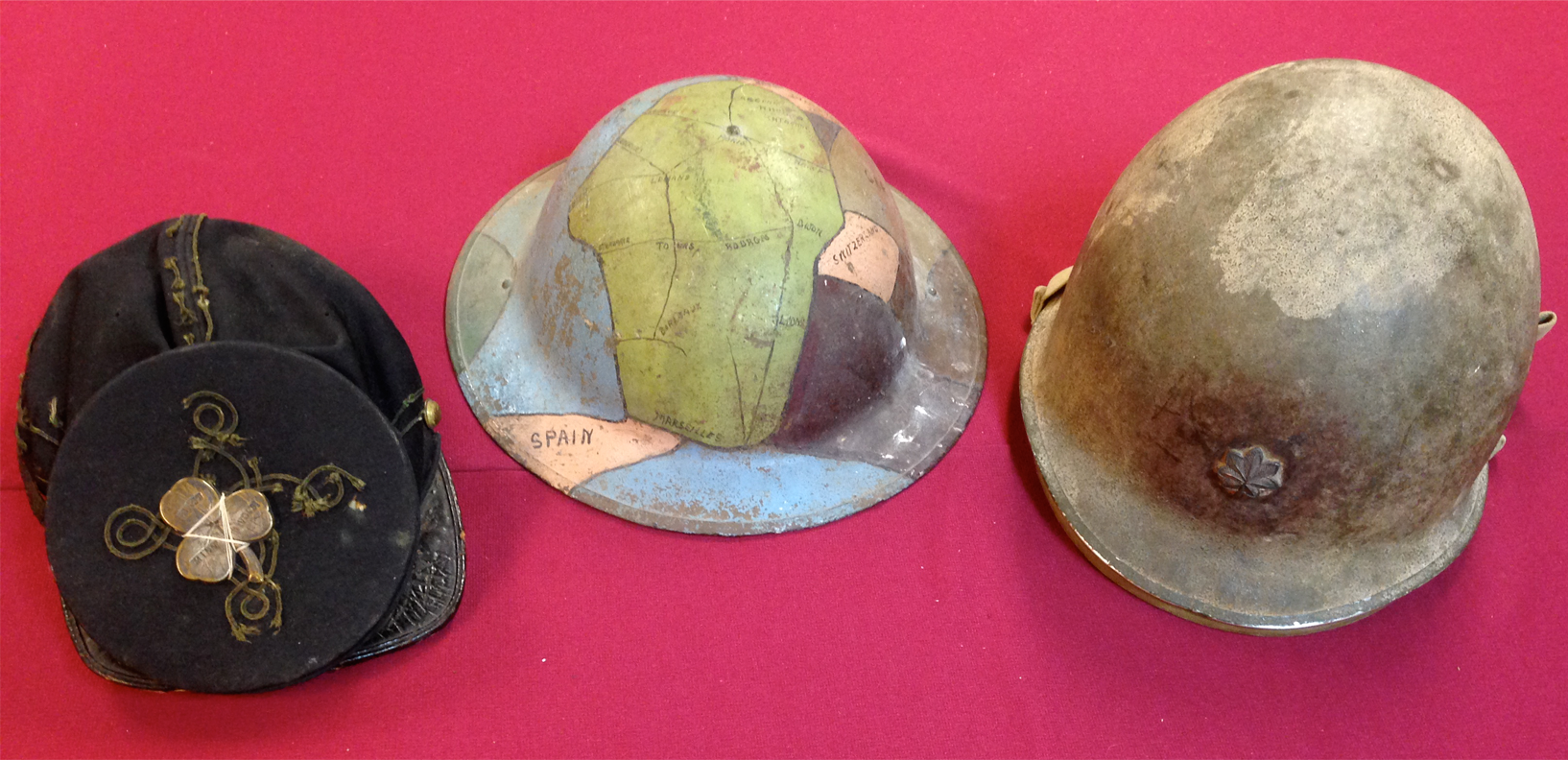Receive the Historical Messenger in your inbox once every two weeks by signing up for our mailing list!
|
This issue: Contents
Tuesday, November 17th, 2015
Editor’s NoteThat’s right! I’m back in your inbox a short time after last week’s Veteran’s Day special edition! Well, we’re more than halfway through November – let’s keep our fingers crossed to keep that snow away. We’ll start today by giving a post-Give to the Max Day report. Next, we’ll check out the details of our upcoming Annual Holiday Book Sale. As always, I have another artifact from the historical society’s collection whose identity is eagerly awaiting your guesses. In this week’s Old News you’ll read about a 1906 crime wave that was casting a dark shadow over Stillwater…literally! And finally, we’ll wrap up today’s article with an article covering a few pieces of our county history that have been lost in the name of “progress”. Want to learn more about the history of Washington County? “Like” WCHS on Facebook and follow us on Twitter! Sean Pallas Historical Messenger editor and Warden’s House Site Manager WCHS NewsThank You!Let me send a huge Thank You to everyone who donated during Give to the Max Day last Thursday. Through your generous contributions, the Washington County Historical Society raised $995.00 to put towards our goals of collecting, preserving, and disseminating the history of Washington County. That being said, if you missed Give to the Max Day, never fear! You can easily donate to WCHS throughout the year at our Donation Page! WCHS NewsAnnual Holiday Book Sale and Open HouseOn Saturday, December 12th, the Washington County Historical Society invites the public to our Annual Holiday Event at the Warden’s House Museum, which runs from Noon – 4:00 PM.
Avoid the overly-pushy department store crowds and instead have a truly unique holiday shopping experience while meeting local authors, sipping coffee generously donated by Starbucks, and enjoying live holiday songs provided by Mary Taylor Allen’s local student musicians at our annual book sale. Not to mention that some of our most popular titles will be up to 50% off their normal price! This year, we’re happy to announce that we’ll be highlighting a new book on the unique history of Stillwater’s Stonebridge Elementary by retired educator, Bernie Anderson. Stonebridge Elementary was a bit of an educational-experiment. What happens when you remove classes and let the students direct the content of the lessons? Find out with The Magic That Was Stonebridge: Reflections From an Era of Teacher Empowerment”. This year’s other featured authors Robert and Nancy Goodman (In Their Own Words, The Last Rafter, and more), Gloria VanDemmeltraadt (Memories of Lake Elmo, Darkness in Paradise), Bill Schrankler (Shadows of Time: Minnesota’s Surviving Railroad Depots), Frederick L. Johnson (Suburban Dawn, Sea Wing Disaster), Ken Martens (The Perilous St. Croix River Valley Frontier), Pam, Robin, & Nancy (Holiday Cookie Creation), and Brent Peterson (Stillwater: The Next Generation) will also be on hand to chat about their newest works and sign copies of their books. This is the perfect personalized gift for the lover of history in your life! The Warden’s House Museum is located at 602 Main Street N. in Stillwater, MN. Please contact Sean Pallas at 651-439-5956 or spallas.wchs@gmail.com for more information on this event or to arrange a tour of the museum. What is This Thing?!
What Is This Thing?! (Round 21) Thank you to everyone who made a guess at last week’s What Is This Thing?! Most of you answered that last issue’s item was a “buggy horse whip” which is definitely correct. But only one person managed to be absolutely 100% on the money… This particular horse whip was used by Stillwater native Arthur Jamieson to drive the horses working in the lumber industry. Winter was actually the logging season here in the St. Croix Valley. After felling the logs, the wood would be piled onto horse drawn sleighs and pulled across iced roads to lessen the animals’ burden. Even still, when you see the photos of these massive loads – you’ll see the horses probably needed a bit of encouragement. Be sure to keep up with the Historical Messenger, the historical society recently received a very interesting donation of some other items belonging to Arthur Jamieson that will be revealed in a future issue… On to today’s challenge! I’ve gone easy on you for the last two “What Is This Thing?!”s…but today’s challenge features an item that’s a bit more unique. Can you identify the WCHS artifact photographed above? Can you guess its use? If you’d care to venture an answer, you can send an email to me at spallas.wchs@gmail.com, tweet @WCHSMN, or post your guess on our Facebook page. Good luck! Old NewsVandalism Spree Brought to LightOh the joys of youth. One of your buddies comes up with a bright idea of how to pass the time…and the next thing you know, you’ve got a court date. Boys Arrested for Breaking Lights – Stillwater Messenger – November 17, 1906 Chief Barnes has rounded up a half a dozen young boys who have been caught in the act of breaking incandescent lights and causing considerable damage to the electric light company. The boys had a hearing before Judge Doe Friday morning, who gave them a talking to and let them go with the promise that their parents will settle with the company for the loss sustained. Featured ArticleLost Historyby Brent Peterson, WCHS Executive Director Stillwater is a town at has a lot of pride in its historic buildings. The commercial district of town is on the National Register of Historic Places and the citizens are proud of that. It was a great thing that the “Urban Renewal” of the 1960s didn’t take all the majestic buildings from the skyline of Stillwater, but it did take a few. Today, the most talked about building that is no more in Stillwater is the Union Depot. Built in 1887, and opened with a grand celebration in early 1888, the depot was the most impressive building downtown Stillwater for decades. Designed by Chicago architects Edward Burling and Francis M. Whitehouse, the depot was construct by local contractor L.W. Eldred.
Passenger service from the Union Depot ended in 1927, but the Northern Pacific Railway operated a ticket office in the building until 1954. A restaurant was operated in the depot for many years. Morey Crotto took over the restaurant in June 1932 calling it the Depot Café, which continued until 1955. The old depot was purchased by Russell Gilbert in February 1955 and used for his new company called United Fabricators and Electronics, UFE, which made radio and television parts. Gilbert sold the depot in 1959 to the Hooley’s who, in turn, torn the old building down in March 1960 to build the Hooley Supermarket. The Hersey & Staples block that was located on the corner of Myrtle and Main Street, where Stillwater Antiques is now and formerly the Cosmopolitan Bank, was constructed in 1871. In the Stillwater Messenger of June 2, 1871, there was a sizable article about the construction of this building. The building was to be “50 feet on Main Street, and 125 on Myrtle Street, it will be three stories in height, with a basement, The building will be built of Stillwater stone, with the corners, window and door caps and trimmings of Lake Superior stone, which is of the same quality as that of the Milwaukee Court House. The front at the top of the building will have an exceedingly neat attractive appearance.” On the first floor of this new building would be two large rooms fronting Main Street, one of which was already to be used by the Lumberman’s National Bank. There were also two offices for rent on the Myrtle Street side. A center staircase led to the second floor where there were two large offices fronting Main and four offices fronting Myrtle Street. The third floor was originally a large open room, 50 X 120 feet with 15-foot high ceilings, perfect for a lodge or a fraternal organization. Over the years there was a dry goods store, groceries, a bakery, and of course, the bank occupying on of Stillwater’s most beautiful buildings. The Lumberman’s National Bank later became the Cosmopolitan Bank. In 1967, the bank officials decided it wanted a more modern “log-cabin type of building” in which to do business. So the decision was made to raze the nearly 100-year old building and construct something else. In September 1967, Bolander & Sons of Minneapolis started the demolition of the old Hersey & Staples block. It took until early the next year to complete and clean up the site. The local company of George W. Olsen Company constructed the present building. The architects were Kilstofe & Vosejpka, Inc. of Wayzata and the new Cosmopolitan Bank was opened in the spring of 1968. Another outstanding building in downtown Stillwater that is no more was the Auditorium Theatre on South Second Street. The plans for the Auditorium were drawn by the firm of Kinney & Detweiler of Minneapolis and the local construction firm of O.H. Olsen was the company to build it. The grand opening of the Auditorium took place on January 27, 1906 when the comedy play of “Piff, Paff, Pouf” took the stage. In 1919 the first motion picture was shown at the Auditorium. It was a 10-reel version of “Shepherd of the Hills,” and from then on movies could be seen at the theatre. During July 1939, the theatre was closed for two days while a new sound system was installed. As time went on, the building began to show its age. By the early 1970s, structural problems along with declining attendance made it hard to keep the building open. Though many people tried very hard to keep the Auditorium going (there was even a plan to make it into an evangelism center) the condition of the building made its closing inevitable. The headline of the November 10, 1976 issue of the Stillwater Gazette said it all: “Auditorium Theatre to be Razed.” The Battle Wrecking Company of Minneapolis was to begin demolition of the building on November 13 and be completed by the week of November 28th. There were other buildings that fell to the wrecking ball such as the Mower and Torinus block and the little white building on North Main Street that was Morey’s Café. Stillwater did well on preserving much of its heritage, but like everywhere else, some of Stillwater was lost. |
Events
More information: WCHS Events >>> Preserve the Past, Share in the Future!Become a member of the Washington County Historical Society! Membership is one way that you can help support the Washington County Historical Society. Your membership helps us collect, preserve, and disseminate the history of Washington County for county residents and visitors in the belief that a historical perspective enhances our understanding of community and sense of place. Benefits of membership:
The Washington County Historical Society has depended on membership ever since it was formed in 1934. Please show your support for the organization by becoming a member today. More: WCHS Membership >>> Mission StatementWashington County Historical Society collects, preserves, and disseminates the history of the county and state of Minnesota.
|
|||






 Company B of the First Minnesota was involved in many of the most well-known battles of the Civil War. It saw action at Bull Run, Yorktown, Antietam, Fredericksburg, Chancellorsville, and Gettysburg and was present at Appomattox Court House for General Lee’s surrender on April 9th, 1865. According to Anita Buck in her article on the H & H Last Man’s Club, the rallying cry of the 135th infantry of Company B became “to the last man,” a phrase used at Gettysburg originally to help spur on the troops (Army, May 2004). The phrase also helped to establish the Last Man’s Club after the war.
Company B of the First Minnesota was involved in many of the most well-known battles of the Civil War. It saw action at Bull Run, Yorktown, Antietam, Fredericksburg, Chancellorsville, and Gettysburg and was present at Appomattox Court House for General Lee’s surrender on April 9th, 1865. According to Anita Buck in her article on the H & H Last Man’s Club, the rallying cry of the 135th infantry of Company B became “to the last man,” a phrase used at Gettysburg originally to help spur on the troops (Army, May 2004). The phrase also helped to establish the Last Man’s Club after the war.